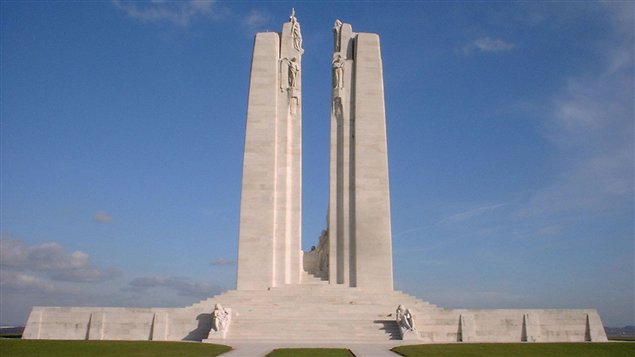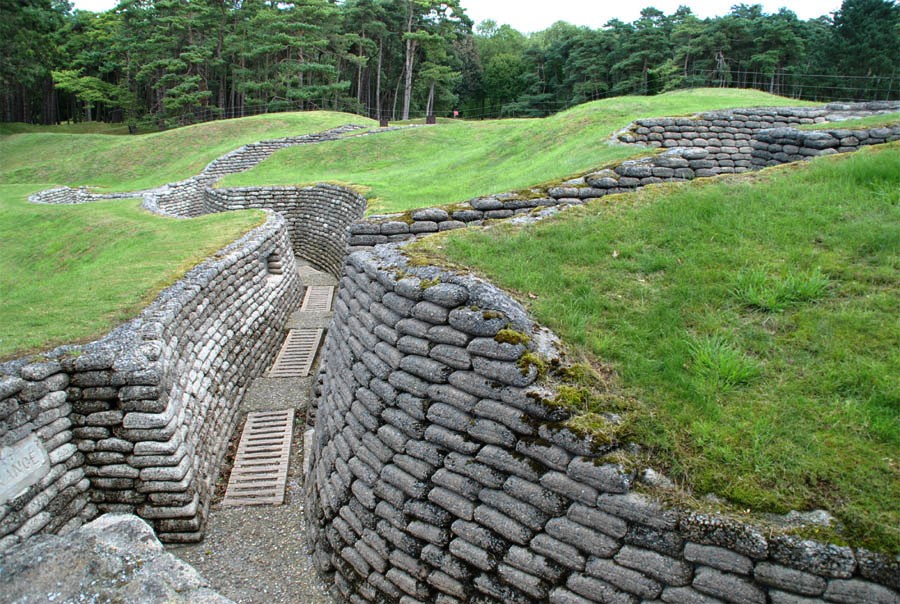Short Stories From 10 Years Ago – March 9, 2004
Vimy Ridge
Short Stories From 10 Years Ago – March 9, 2004 – I attended The University of Waterloo and received an Honours Degree in History with a minor in English in 1972. As part of my final year I had to do two major research papers.
I selected The Russian Intelligentsia as one of my papers and the other was a research project about General, Sir Arthur Currie and the part played by The Canadian Corps in WWI – specifically the taking of Vimy Ridge on April 9, 1917. I went about my research in an overzealous fashion, much to the amusement of my Canadian history Professor – John English.
During a mid-point review of my progress, he suggested that I seemed incapable of seeing anyone’s point of view except Arthur Currie’s and on my final draft, he wrote that I might like to organize a pilgrimage to Vimy and take busloads of the ‘unenlightened’ with me. I believe I got an ‘A’ on that paper! When I was researching the Canadian Corps, I couldn’t get over the fact that so many people had no idea of Canada’s enormous contribution and sacrifice in the war.
More than 66,000 Canadians gave their lives for the cause of freedom in the First World War. 3598 Canadians died in the capture of Vimy Ridge, an incredibly well-fortified position that neither the English or the French had been able to take from the Germans.
When I graduated from university I couldn’t get Vimy Ridge out of my mind and the summer I was twenty-two, I went to France with a friend to visit the monument. The first world war was often referred to as “the war to end all wars”. Sadly as a global community we have learned precious little in the ensuing years, and wars continue to ravage the world.
Wars are often staged in the name of religion, but also waged for political, economic and power gains. For those of us, fortunate enough to live in countries not plagued by war. We should never take for granted the sacrifices of others and the remarkable gift of freedom that we enjoy. For me, this moment of genuine appreciation, came when I walked down the long path that leads to The Canadian Memorial at Vimy Ridge.
I had grown up with The Canadian Ensign as our flag and was deeply dismayed at the selection of our current flag. I thought it lacked imagination and style, but when I saw our Canadian flag flying proudly over Hill 145 at Vimy Ridge, my disapproval vanished in an instant. I have never experienced such a rush of pride in my heritage or my country as I did that day.
I couldn’t find my voice as I looked at the two white pylons soaring 27 metres in the air over the base of the monument, They represent Canada and France – two nations, whose sons fought and died for peace and freedom. Twenty sculpted figures grace the monument and represent, among other things, Justice, Peace, Truth, Knowledge, Gallantry, Sympathy, Sacrifice, Victory, The Male Mourner, The Female Mourner and one of the central figures – The Weeping Woman who represents Canada, a young nation – weeping for her gallant, fallen sons.
The memorial stands on the highest point of the fourteen kilometre long ridge. It was designed by Walter Seymour Allward, a Canadian architect and sculptor, whose plan was selected from a competition that attracted 160 entrants. The base and the two pylons contain 6000 tonnes of limestone brought from Yugoslavia. The base of the memorial is atop the highest point of Vimy Ridge, consequently the topmost figure – that of Peace – towers 110 metres above the Douai Plain to the east. The twenty figures were carved where they now stand, from huge blocks of stone, and the finishing touches were added by a master carver. On the outside of the monument walls are carved the names of the 11,285 Canadians, who were killed in France and whose final resting places are unknown. The monument took eleven years to complete. It was unveiled by King Edward VIII on July 26, 1936.
The day I was at Vimy, I spent the afternoon in the trenches around the monument, an experience that left a gentle, yet indelible mark on my soul. There were dozens of tourists at the memorial, but an eerie, silence permeated the grounds. An unspoken sense of respect and gratitude filled the air. To a person, we were aware that we walked on holy ground. Today, when I’m in the company of the sons of my friends, I realize that it was young men just like them who gave their lives that frightful April day in 1917.
In 1922, France dedicated these lands to Canada in perpetuity, as a gesture of lasting gratitude. This beautiful memorial honours the young Canadian soldiers who gave their lives for a righteous cause, and it ensures that their sacrifice will never be forgotten. It is our responsibility to observe Remembrance day, to wear a Poppy and to think of the young men who didn’t return home, never grew old, and who rest forever in a faraway land. Our freedom is their legacy, and we have a sacred trust to honour it always.






